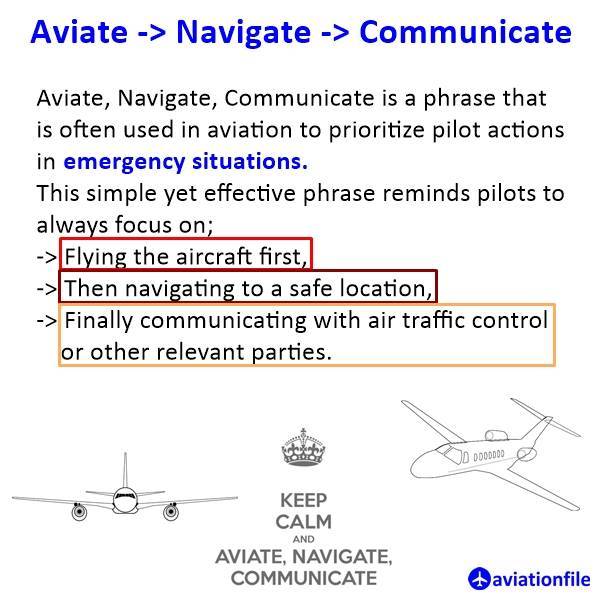Aviate, Navigate, Communicate under Pressure
Aviate, Navigate, Communicate is a phrase that is often used in aviation to prioritize pilot actions in emergency situations. This simple yet effective phrase reminds pilots to always focus on flying the aircraft first, then navigating to a safe location, and finally communicating with air traffic control or other relevant parties.
The concept of Aviate, Navigate, Communicate has been taught in aviation training for decades, and it has been credited with helping pilots remain calm and focused in stressful situations. The phrase is especially important in emergency situations when quick decision-making and prioritization are essential to ensure the safety of the flight crew and passengers.
Aviate
The first priority for any pilot is to maintain control of the aircraft. In an emergency situation, it is critical that the pilot keeps the aircraft flying and under control. This includes controlling the aircraft’s altitude, heading, airspeed, and maintaining a safe distance from other aircraft and obstacles.
In many emergency situations, the pilot may need to take immediate action to maintain control of the aircraft. For example, if an engine fails, the pilot may need to quickly adjust the aircraft’s attitude, power, and speed to maintain a safe altitude and avoid a crash. By focusing on aviating first, the pilot can ensure that the aircraft remains airborne and that the crew and passengers are safe.
Navigate
Once the pilot has control of the aircraft, the next priority is to navigate to a safe location. This may involve changing course, altitude, or speed to avoid hazards such as bad weather, terrain, or other aircraft. The pilot must have a clear understanding of the aircraft’s location and the available options for a safe landing or diversion.
During this phase, the pilot must also consider the aircraft’s fuel and other resources to ensure that they can make it to a safe location. In some cases, the pilot may need to prioritize finding a suitable landing spot over communicating with air traffic control or other parties.
Communicate
After the pilot has established control of the aircraft and navigated to a safe location, the final priority is to communicate with air traffic control, emergency services, or other relevant parties. The pilot must provide clear and concise information about the emergency situation, the aircraft’s location, and their intentions.
Effective communication is critical in emergency situations as it allows air traffic control and other parties to provide assistance and support. In many cases, air traffic control can help guide the pilot to a safe landing location and coordinate with emergency services to provide assistance.
Conclusion
“Aviate, Navigate, Communicate” is a simple and effective phrase for pilots in emergencies. It helps prioritize actions. First, the pilot must fly the plane and maintain control. This ensures the safety of everyone on board. Next, the pilot focuses on navigating to a safe location. Finally, they communicate with air traffic control and other relevant parties. This sequence helps pilots make quick decisions. It ensures the safety of the crew and passengers.



